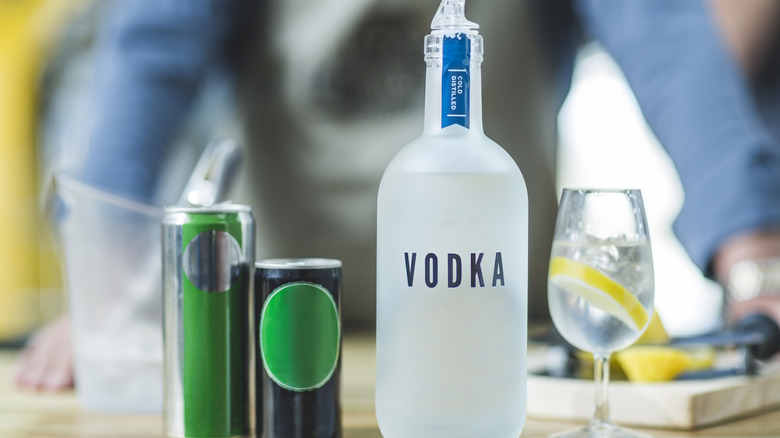The Country That Exports The Most Vodka Isn't Russia
Vodka is one of the most accessible and affordable spirit categories on the market. Made from water and ethanol (typically derived from grains, fruits, or vegetables), vodka has long been associated with the customs and traditions of Russia. Production of the flavorless liquor, whose name translates to little water in Russian and Polish, can be definitively traced back to the 14th century, though some evidence suggests the drink could have originated as early as the 8th century. While Russian vodka is often perceived as a leader in the category, the Eurasian country is not actually among its top global exporters. Surprisingly, a Scandinavian nation holds the number one spot: Sweden.
Vodka distillation was first introduced to the Swedes around the 1400s, though mass production didn't begin to take off until improvements to the process were made in the late 18th century. In 1897, Swedish entrepreneur and "king of spirits" Lars Olsson Smith founded the distillery that later became Absolut, one of the most well-recognized vodka brands in the world today. Thanks to brands like Absolute and Svedka, Sweden raked in about $469 million from vodka exports in 2023, with Russia's exports in 2024 valued at around $34.6 million.
Though the U.S. imports the most vodka in the world, American imports of Russian vodka have declined nearly 80% since 2011 due to sanctions and boycotts against Russia. While Sweden is on top globally, France exports the most vodka to the States, with Americans spending about $463 million on French vodka in 2024.
What's the difference between Russian, Swedish, and French vodka?
There are notable distinctions between how different countries distill the vodka that make each version stand out. Russia, which famously drinks the most vodka in the world, is known for producing top-notch liquor based on centuries of tradition. Since most locals prefer to drink their vodka straight, Russian vodka is typically made from the highest quality rye or wheat to create a rich final product. The notes of citrus and spice found in Russian vodka pair wonderfully with pickled vegetables, smoked fish, and cured meat.
Swedish vodka has a far more subtle flavor than its Russian counterpart, though it is also traditionally made with potatoes, and sometimes wheat or barley. Some producers are known for exclusively using winter wheat, which spends much of its growing season forming hard grains underneath beds of Swedish snow. Unlike in Russia, where vodka is usually distilled once or twice, vodka often undergoes multiple distillations in Sweden. The result is a smoother spirit that pairs beautifully with lighter cocktails.
In France, the country's long tradition of viticulture paved the way for premium vodkas crafted with grapes. The use of grapes creates a more delicate liquor, which can take on a slightly sweet, berry-forward flavor profile that pairs well with caviar. While some French producers will also use traditional ingredients such as wheat or potatoes, grape-based French vodkas are considered the most unique.


